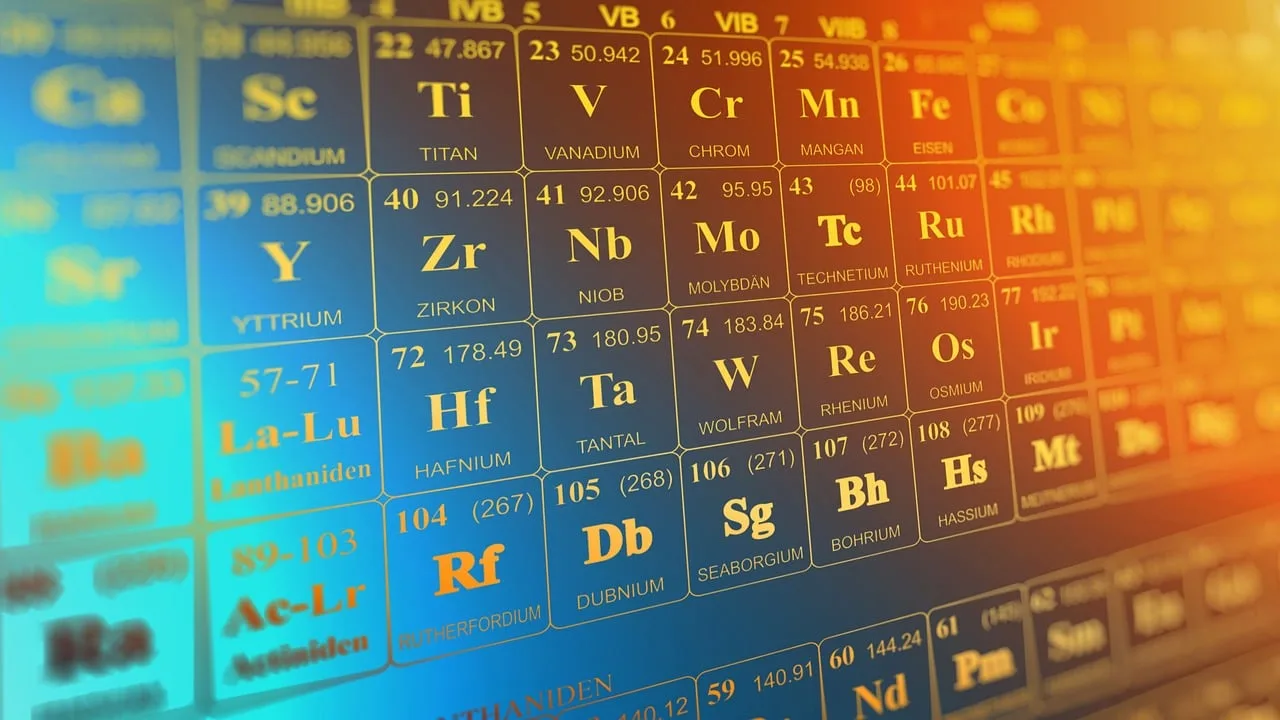Molecular Dance Reveals the Secrets of Rare Earth Separation
Molecular Dance Reveals the Secrets of Rare Earth Separation.
What do magnets, smartphones, and advanced medical imaging devices have in common? At first glance, not much. Yet all of these technologies rely on a special class of metals known as rare earth elements, and among them, the lanthanides play a starring role. From enabling the bright glow of LED screens to powering the strong magnets inside electric vehicles, lanthanides are critical to nearly every corner of modern technology.
But there’s a catch: while these elements are essential, they are notoriously difficult to separate from one another. Chemically, they are so similar that conventional techniques often struggle to tell them apart. For decades, this challenge has slowed down efforts to efficiently process rare earths, driving up costs and complicating supply chains.
Now, researchers at the U.S. Department of Energy’s Argonne National Laboratory have uncovered new molecular-level details that could transform how we think about separating these vital elements. Their study shines a light on the hidden choreography of molecules—revealing the subtle “dance moves” that dictate whether one lanthanide can be separated cleanly from another.
Why Lanthanides Matter
Lanthanides are a series of 15 metallic elements located near the bottom of the periodic table, stretching from lanthanum to lutetium. Despite their name, they are not particularly rare in the Earth’s crust, but they are rarely found in concentrated deposits. More importantly, they almost always occur together, tightly mixed within the same minerals.
Because their atomic sizes and chemical behaviors are nearly identical, conventional separation methods often require many repetitive and resource-intensive steps. As a result, extracting pure lanthanides is expensive, time-consuming, and environmentally taxing. Yet these elements are indispensable: they serve as catalysts in oil refining, components in wind turbines, building blocks of fiber optics, and even contrast agents in MRI scans.
The Old Puzzle: Solvent Extraction
For decades, chemists have relied on a process called solvent extraction to isolate lanthanides. In simple terms, this involves dissolving the raw ore into an acidic solution and then coaxing certain lanthanides out of the water and into an oil phase. To make this possible, scientists use specialized molecules called extractants. These molecules act like dance partners, surrounding and binding to a lanthanide ion, then escorting it away from the water and into the oil.
Although widely used, solvent extraction is far from perfect. The method consumes large amounts of chemicals and energy, and because the differences between lanthanides are so subtle, it requires many repeated cycles to achieve high purity. For years, researchers have known that there must be more to the story—something hidden at the molecular level that controls why some lanthanides move more easily than others.
The Dance Floor of Molecules
Argonne’s team approached the puzzle with a fresh perspective. They imagined the solvent extraction process as a crowded dance floor. Each extractant molecule, each water molecule, and each lanthanide ion plays the role of a dancer. How these dancers move, jostle, and arrange themselves determines the outcome of the separation.
To map this choreography, the researchers turned to an advanced computational tool known as metadynamics. This simulation method allows scientists to explore the “energy landscape” of molecular systems—essentially a map of all the possible ways molecules can arrange themselves and the energy costs associated with each arrangement.
“Metadynamics helps us see all the possible ways molecules can organize around the lanthanide,” explained Michael Servis, an Argonne chemist and one of the study’s authors. “By charting out these options, we can identify why some lanthanides are more cooperative partners than others.”
Light Versus Heavy Lanthanides
One of the team’s key findings is that lighter lanthanides—those at the beginning of the series, like lanthanum and cerium—tend to form stronger bonds with the extractant molecules. This stronger interaction makes them easier to separate under certain conditions. In contrast, heavier lanthanides encounter a problem: crowding.
Because the ions of heavier lanthanides are slightly smaller, the surrounding molecules have less space to arrange themselves comfortably. On the dance floor, it’s as if too many partners are trying to squeeze into the same space, creating a more awkward and less stable configuration.
“The extractant molecule, ions, and water must all fit around the lanthanide,” Servis explained. “This creates a crowded environment, and that crowding affects how efficient the extraction process can be.”
Interestingly, many conventional separation systems have been observed to favor the heavier lanthanides. But the Argonne study suggests that under the right molecular circumstances, the opposite can occur—a surprising twist that offers new possibilities for refining separation techniques.
The Role of Water: A Silent Partner
Another crucial discovery came from examining the role of water molecules. While extractants are the main dance partners, water is always present in the background. Far from being a passive spectator, water occasionally steps in to stabilize the lanthanide-extractant relationship. Some water molecules directly bind to the lanthanide ion, while others form hydrogen bonds that give the whole system more flexibility.
By broadening the possible “dance moves,” water molecules make it easier for certain arrangements to occur, ultimately influencing which lanthanides are more easily separated. This subtle but important role helps explain inconsistencies in past experiments and provides new clues for designing better extractant molecules.
Toward a Smarter Separation Strategy
The implications of this research reach well beyond the lab. By unraveling the molecular rules of the game, scientists can begin to design smarter, more efficient separation systems. These could use less energy, require fewer chemicals, and produce less waste—addressing both economic and environmental concerns.
Looking ahead, the Argonne team is exploring new solvents and extractant molecules that might exploit these molecular dynamics more effectively. Their approach, which bridges the gap between fundamental chemistry and real-world applications, is a powerful example of how computational insights can guide technological advances.
“Our work provides a roadmap for improving separation processes,” Servis said. “By understanding the coordination chemistry in realistic solution conditions, we can make informed choices about how to design systems that are both more efficient and more selective.”
A Step Toward Resilient Supply Chains
As the global demand for rare earth elements continues to grow, especially for clean energy technologies like wind turbines and electric vehicles, innovations like these are critical. The ability to separate lanthanides more effectively could reduce reliance on costly imports, strengthen domestic supply chains, and open new doors for sustainable resource management.
In the end, the discovery comes down to a simple but powerful idea: chemistry is not just about static bonds and rigid structures—it is about movement, rhythm, and choreography. By revealing the hidden dance of molecules, Argonne’s scientists have taken a major step toward solving one of the most difficult puzzles in modern materials science.



